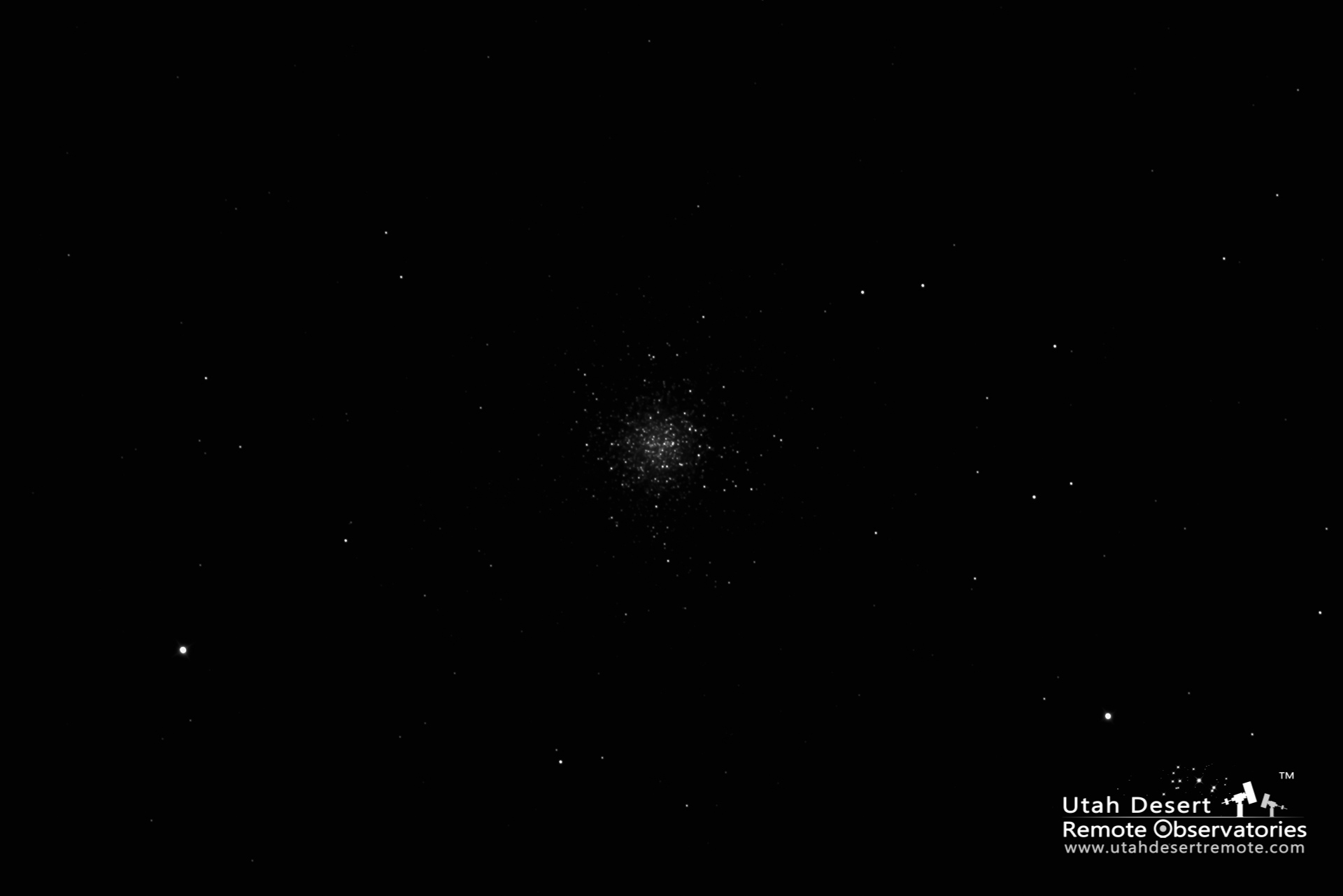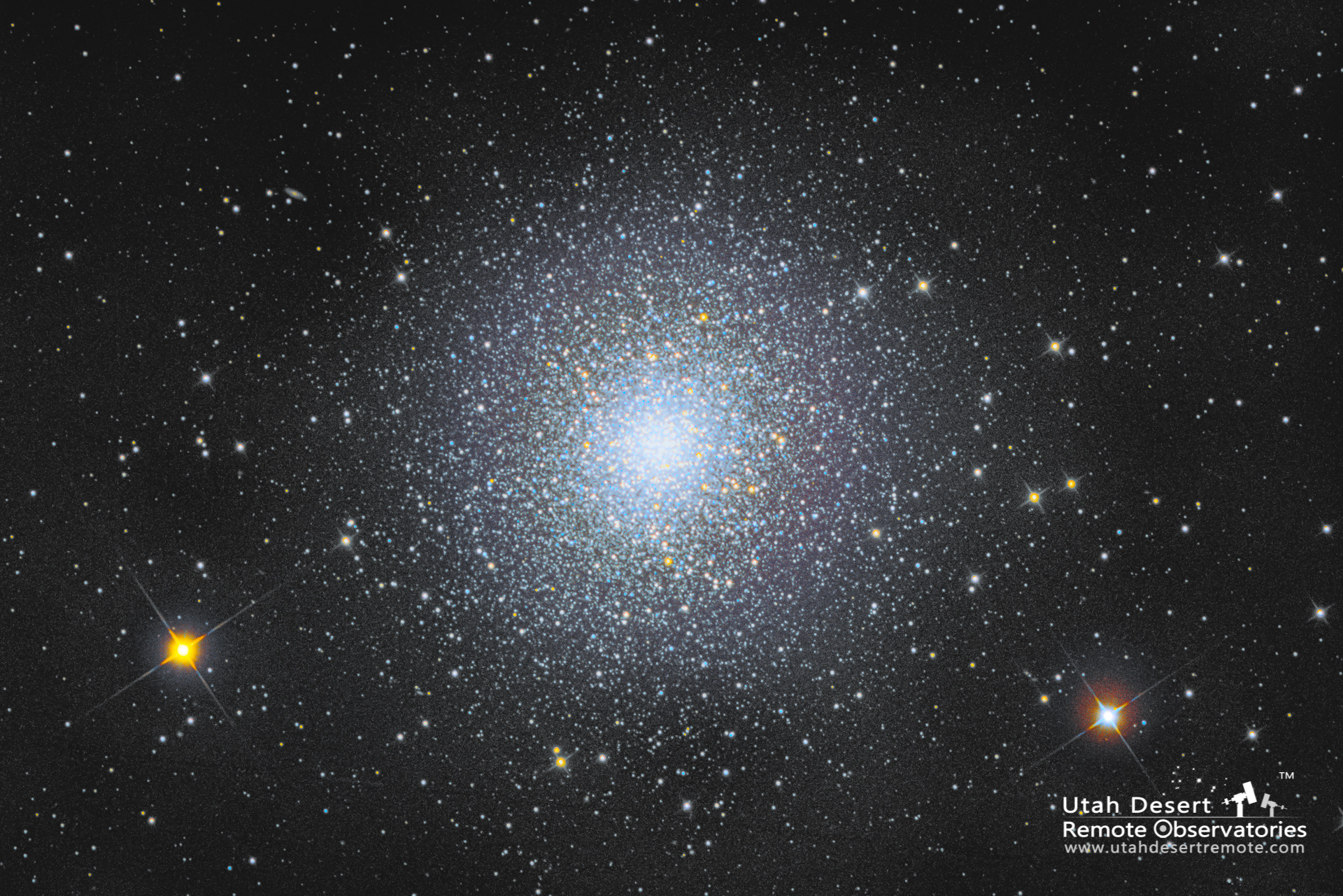

Welcome to the first globular cluster edition of “What’s Hiding in the Stars.” In this case, it’s simply more stars – enough to form the famous globular cluster M13, the Great Cluster of Hercules. Most astro images start out very dull and boring and it’s through careful post processing that we’re able to bring out the details hidden in the shadows.
One of the most important steps is called “stretching.” It’s the process where we stretch out the dark tones to find and brighten the not-quite-as-dark details hiding among the shadows. It’s a little like shining a flashlight in the back of a dark closet to reveal the hidden treasures – they were there all along but you couldn’t see them.
Globular clusters are also interesting in themselves. They actually orbit above and below our Milky Way Galaxy, almost like little dwarf satellite galaxies themselves. M13 is about 25,000 light years away from Earth, so it’s quite bit farther than most of the Milky Way deep sky objects we like to image. For instance, the Orion Nebula is on 1,344 light years away and The Pleiades open cluster is even closer at 444 light years. But even at 25,000 light years it’s still part of our Milky Way Galaxy which is about 200,000 light years across. Our nearest large galaxy is Andromeda at about 2.5 million light years away. Bode’s Galaxy M81 (see my previous post) is about 11.7 million light years away.
